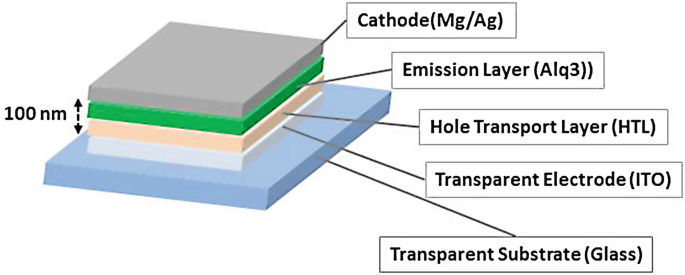Thin-Film Encapsulation (TFE) Market Pain Points Hindering Growth in 2025

The thin-film encapsulation (TFE) market is experiencing rapid growth due to the demand for advanced protective solutions in various applications such as OLED displays, flexible electronics, and solar panels. Despite its positive trajectory, several pain points remain within the market, hindering its growth and development. These challenges span across material limitations, production complexities, and cost barriers. Understanding these pain points is crucial for stakeholders aiming to overcome the obstacles in the thin-film encapsulation (TFE) market and achieve long-term success.
1. High Production Costs
The production of thin-film encapsulation materials requires high-end technologies such as atomic layer deposition (ALD) and physical vapor deposition (PVD). These processes involve complex equipment, sophisticated control systems, and substantial energy consumption. As a result, the cost of manufacturing TFE solutions remains high, limiting their widespread adoption, especially in cost-sensitive industries. Companies are struggling to find cost-effective methods that still meet performance and durability standards.
2. Material Performance Challenges
For TFE to function effectively, the encapsulating layers must offer excellent moisture and oxygen barrier properties to protect sensitive components like OLEDs. However, finding materials that provide these properties while maintaining flexibility, mechanical strength, and long-term stability has proven difficult. Existing materials often face limitations in terms of transparency, moisture barrier efficiency, and cost. The demand for novel materials that balance performance, flexibility, and cost is critical but remains a significant challenge for the industry.
3. Scaling Up Production
The processes involved in thin-film encapsulation, such as ALD and PVD, are precise and require fine control over deposition thickness and uniformity. Scaling up these processes for mass production while maintaining consistent quality and performance is a major hurdle. The complexity of these techniques, along with the need for specialized equipment, makes it difficult for manufacturers to meet the growing demand for TFE solutions in large volumes without sacrificing quality.
4. Limited Availability of Reliable Suppliers
The thin-film encapsulation (TFE) market is still in a developing stage, and as a result, there are limited suppliers offering high-quality TFE materials at scale. The small number of reliable suppliers increases the risk for companies relying on TFE in their production processes. This limited supply chain can lead to delays in the production of key components, such as flexible displays, OLED panels, and solar cells. Manufacturers are finding it challenging to secure long-term, dependable suppliers for the materials needed in TFE applications.
5. Environmental Concerns
As the demand for TFE solutions increases, the need for environmentally sustainable materials and processes becomes a priority. The production of certain thin-film encapsulation materials may involve toxic substances or processes that contribute to environmental pollution. Additionally, the energy-intensive nature of deposition techniques like ALD and PVD raises concerns about the sustainability of these methods. Industry players must find ways to improve the environmental impact of TFE technologies while balancing performance and cost.
6. Technological Advancements and Market Competition
The thin-film encapsulation (TFE) market is witnessing rapid technological advancements as companies strive to improve material properties, deposition techniques, and cost efficiency. However, the constant evolution of technology also brings increased competition. Players in the market must invest heavily in R&D to stay ahead of the curve, often at the cost of high capital expenditures. As competition intensifies, companies with less financial flexibility may struggle to keep pace with the latest developments, impacting their market position.
7. Compatibility with Emerging Technologies
As the market for flexible and wearable electronics grows, new challenges arise in integrating TFE with emerging technologies. For instance, the integration of TFE in advanced display technologies such as foldable and stretchable OLEDs presents unique hurdles in terms of material flexibility and adhesion. Ensuring that thin-film encapsulation can be adapted to work effectively with next-generation devices is crucial, but this is a complicated task that requires continued innovation and testing.
8. Long-Term Durability Concerns
Thin-film encapsulation materials must withstand long-term exposure to environmental factors such as humidity, temperature fluctuations, UV radiation, and mechanical stress. While current TFE solutions offer adequate protection, the long-term durability of these materials remains a point of concern, especially for applications like wearable electronics and solar panels. The performance of thin films over an extended period is still an area where improvements are needed to ensure the reliability of TFE in harsh conditions.
9. Integration into Established Manufacturing Systems
Many industries that require TFE solutions, such as electronics and energy, already have established manufacturing processes. Integrating thin-film encapsulation technologies into these existing systems without causing disruptions can be a major challenge. Manufacturers need to adapt their current processes to incorporate TFE solutions, which may involve significant investments in new machinery, training, and workflow optimization.
10. Regulatory and Standards Compliance
The thin-film encapsulation (TFE) market is subject to various regulations and standards concerning environmental impact, material safety, and product performance. As the market grows and new applications emerge, companies must navigate a complex landscape of regulations and standards to ensure compliance. Meeting these requirements can add to the cost and complexity of production, especially for smaller manufacturers that may not have the resources to stay up-to-date with changing regulations.
- Industry
- Art
- Causes
- Crafts
- Dance
- Drinks
- Film
- Fitness
- Food
- Jogos
- Gardening
- Health
- Início
- Literature
- Music
- Networking
- Outro
- Party
- Religion
- Shopping
- Sports
- Theater
- Wellness
- News


